Weigela blooming: description of the species, variety, planting and care
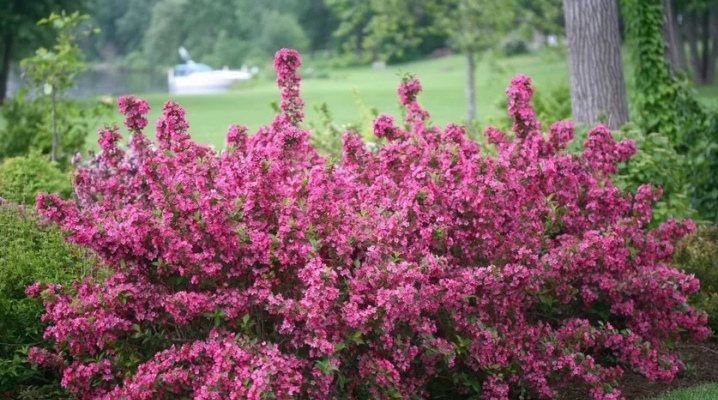
Every gardener tries to beautifully equip his property. For this, various ornamental plants are used. Weigela shrub has long been known to experienced gardeners, it is often used for landscape design.
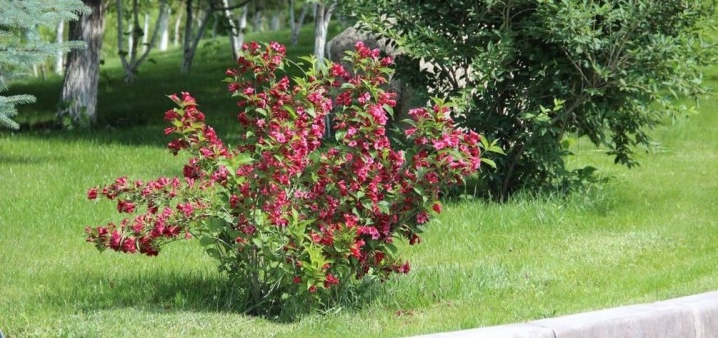
Features and Description
Weigela belongs to the genus of deciduous shrubs of the Honeysuckle family. The area of its growth in nature is represented by the eastern, southeastern Asian regions, the island of Java and the Russian Far East, where you can find 3 types of shrubs. Weigela flowering or florida is one of the species of this plant. This hygrophilous perennial upright shrub of small size does not have a main trunk. An adult bush usually does not exceed 1.5 m, but depending on the variety, the height can vary from 1 to 3 m.
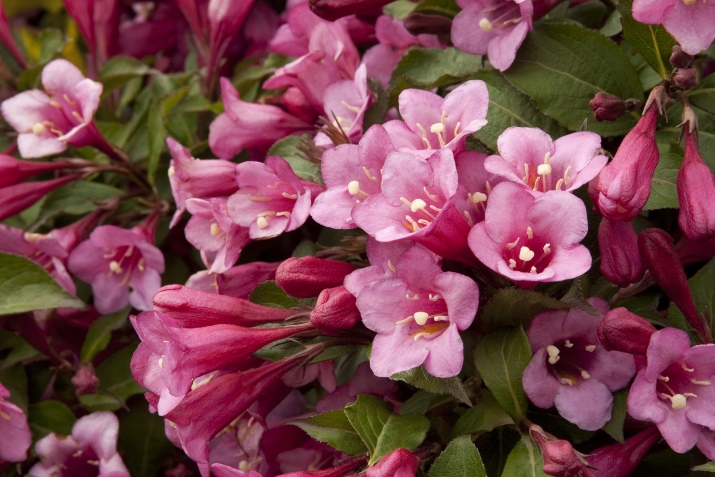
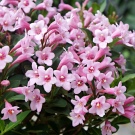
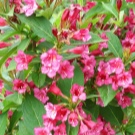
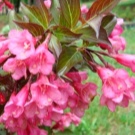
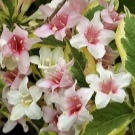
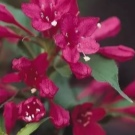
Elongated pointed leaves have serrate or serrate-toothed edges and are opposite. The usual color of the leaves is green or with a reddish tint. However, some varieties of weigela florida may have a different crown color. The inflorescences are bell-shaped or funnel-shaped and are rather large in size. Their color is distinguished by a large abundance of tones: from fawn and white to pale pink and red. Flowers can be arranged singly or in a group, forming small inflorescences.

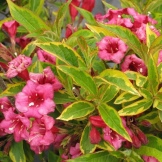
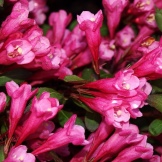
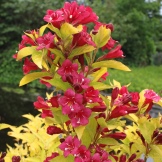
The fruits are cylindrical or ovoid bivalve capsules with small seeds, often with wings. Weigela blooming is capable of blooming 2 times per season
Varietal variety
There are many varieties of flowering weigela, among which such are popular.
- "Victoria". This is a low compact bush, not exceeding a height of 1 m. The Victoria has a dense crown shaped like a ball. Flexible twigs are covered with red with a brown tint leaves, which acquire a thick brown color in the sun. The leaves are small, the flowers do not exceed 2-2.5 cm in diameter. Bell-shaped inflorescences, painted in different tones of pink, form a group of several buds. Their pale pink petals are harmoniously set off by a rich red crown.

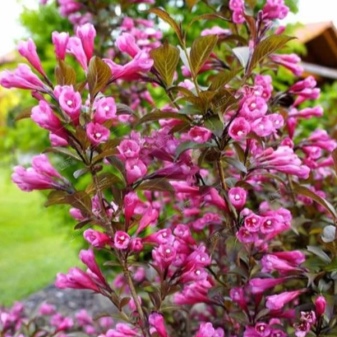
- The variety has similar varietal characteristics. Nana purpurea... This is also a shrub with a dense red crown and inflorescences painted in various pink tones.
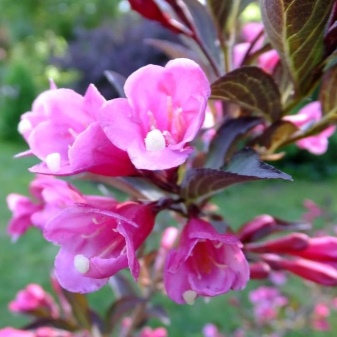
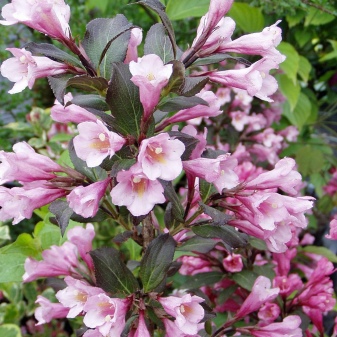
- "Pink Princesses". Weigela of this variety is a shrub, the width and height of which is about 1.5 m. The spreading crown is formed by drooping twigs. Differs in lush flowering in May-June. Blooms again in August or September. The branches are covered with green oval leaves. Light pink bell-shaped inflorescences about 4 cm in diameter are combined into lush clusters of 3-4 flowers. Weigela does not tolerate strong winds: leaves and inflorescences can be damaged and fall off.
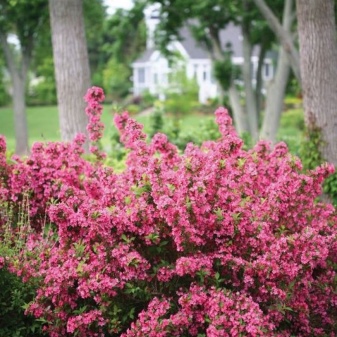
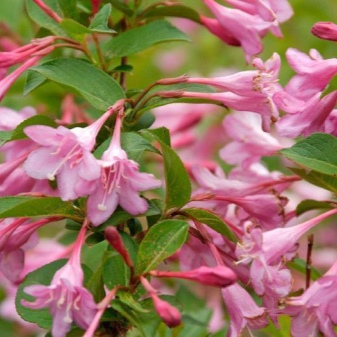
- "Sunny Princesses". A decorative compact bush with a dense crown in the form of a ball has a height and width of 1-1.5 m. The tops of straight shoots are slightly lowered. Oblong leaves, 4 to 8 cm long, have a dark green center with a yellowish border, which gives the plant an unusual decorative appearance. Flowering occurs at the end of May and can last until August. In tubular-bell-shaped inflorescences, the narrow part is slightly elongated, measuring from 4 to 5 cm. The flowers are painted in delicate light pink tones.The petals are framed along the edge with a border of a darker shade. Buds (3 to 7) are collected in inflorescences.
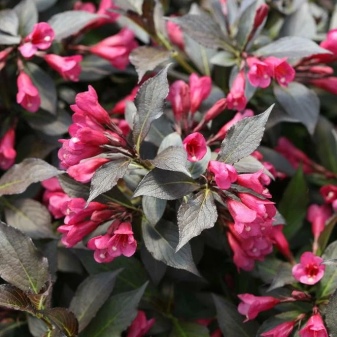
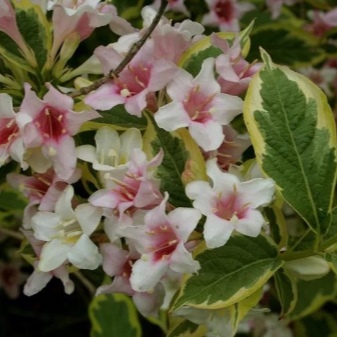
- Marjorie. Weigela reaches a height of 1.5 m. Branches with green leaves form a dense compact crown up to 1.2 m wide. Large tubular flowers can have different colors on one plant: from snow-white and pale pink to crimson. Abundant flowering.
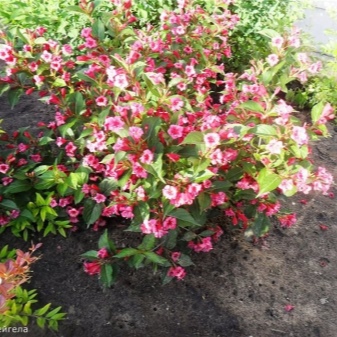
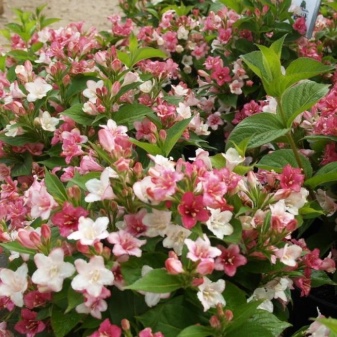
- Minor Black, Black & White and Coin - representatives of undersized varieties. The height of the Minor Black bush does not exceed 75 cm, the width reaches 1 m. The shoots are red-brown in color, they are covered with small shiny leaves, colored in the same way as the shoots. Small inflorescences (about 2.5 cm) have a deep pink color. The shrub blooms in June. "Black and White" has even smaller dimensions - height 30-40 cm, crown width - 60-80 cm. The inflorescence petals are painted in snow-white color, and the tubular narrowed part is ruby-red. The dark green leaves change color and become plum-crimson, effectively setting off the snow-white flowers. "Monet" rarely grows above 50 cm. The peculiarity of the variety is the color of the leaves: a green center with a pink-red border, which gradually lightens to a white-pink tone.
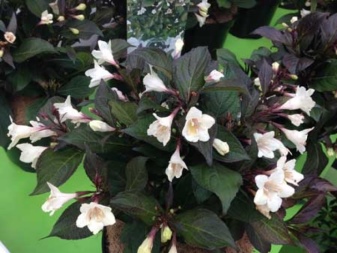
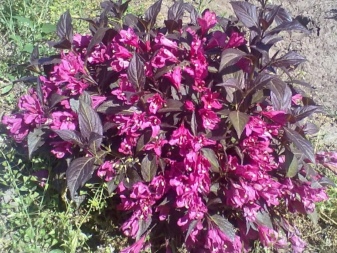
In the fall, the border darkens again. The pink inflorescences harmonize extremely beautifully with the variegated crown.
- "Carnival". A low plant (up to 70 cm) has original, color-changing inflorescences. The opening buds have delicate light pink tones, which gradually darken, acquiring a red tint, and stand out beautifully against the background of bright green leaves. It begins to bloom in the last decade of June.
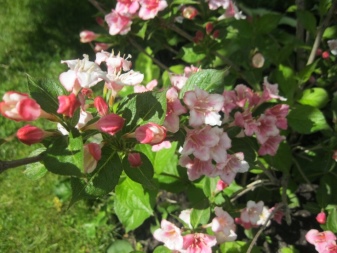
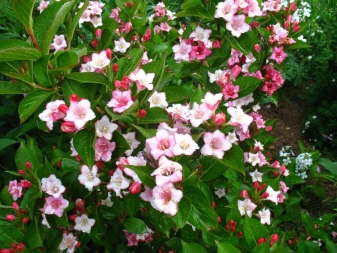
- Wings of Fire. The dimensions (width and height) of a bush with a lush and spreading crown are usually 90 cm.During the season, the foliage changes color, acquiring different shades: from green with brownish, red and copper tint to bronze in spring, from light green to crimson-red in summer. staying that way until the fall. The inflorescences consist of 3-4 bell-shaped flowers of a small size (2.5-3 cm) of a dark pink hue. It blooms twice: from May to June and from late August to September.
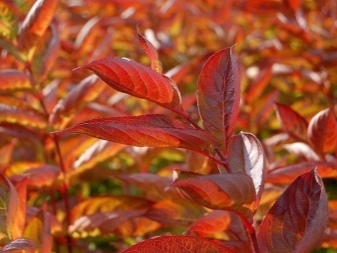
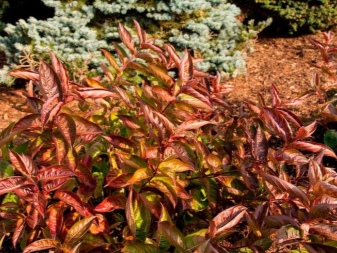
- "Candida". The shrub is a frost-resistant variety. This is a rather tall bush, reaching 1.2 m and having a compact crown (no more than 1.2 m in diameter). The leaves are light green. It begins to bloom from the end of May. Large bell-shaped inflorescences have a snow-white color. The color of leaves and flowers does not change.
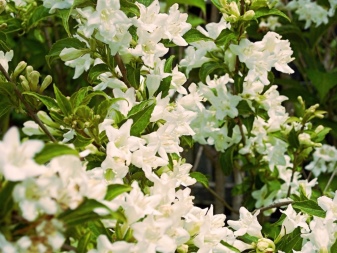
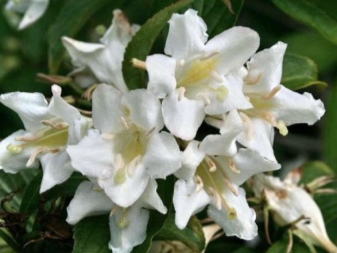
How to plant?
Blooming Veigla is a rather unpretentious plant. But its successful cultivation requires the fulfillment of certain conditions when planting. Weigela loves warmth and good lighting, so it should be planted in elevated sunny places sheltered from the wind. The best time for planting in open ground is spring, bushes planted in autumn will not be able to root well. Weigela prefers loose, light, but nutritious soil with good air and water permeability. The best soil for her is loamy and sandy loam. For planting, you need to use seedlings 3 years old.
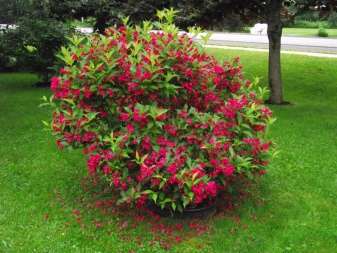
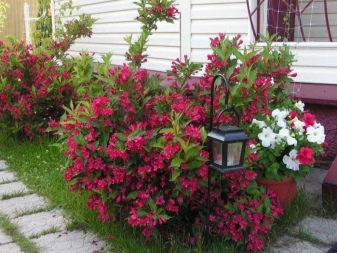
When planting a plant, a substrate is used, including sod soil (2 parts), humus (2 parts) and sand (1 part).
Landing is carried out as follows.
- A hole is prepared with a depth of 30-40 cm, drainage is placed with a layer of 10-20 cm. Then there is a layer of substrate.
- The roots of the shrub are gently straightened and evenly placed inside the pit.
- The pit is covered with a substrate, slightly pressing it down so that voids do not form.
- The root collar should be at the level of the soil; it cannot be buried.
- After that, the land needs to be well watered, and the near-trunk area must be mulched.

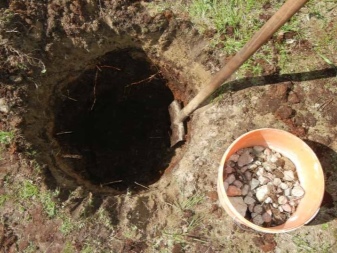
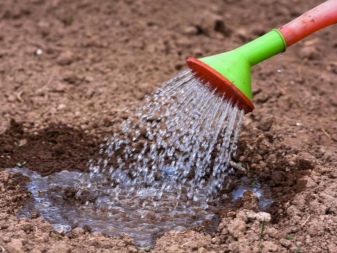
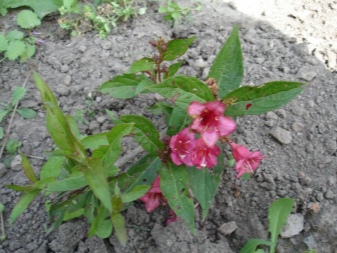
The distance between seedlings when planting depends on the variety: dwarf varieties are planted at a distance of about 80 cm, and tall ones - with an interval of 1.5-2 m.
How to take care of it properly?
Proper plant care provides for the implementation of all agrotechnical rules.
- Watering. The plant should be watered regularly, not allowing the soil to dry out.Dry soil at a depth of 2 cm indicates the need to moisten it. Weeds should also be removed when watering.
- Loosening is carried out simultaneously with watering. The earth is loosened and shallow (8-10 cm), since the weigela has a superficial root system, it can be damaged.
- Mulching the soil under the bush helps to retain moisture and prevents weed growth.
- Top dressing. When growing a shrub, top dressing is done three times a season. The first is applied before the onset of the growing season and mineral fertilizers (superphosphate, urea) are used, which are placed under the bush before the snow melts. The second is introduced in the bud formation phase. At this time, fertilizers containing potassium are used. The third should be done at the end of summer to prepare the weigela for wintering. It is possible to use ash or the preparation "Kemira-autumn". If compost or other organic matter was additionally introduced into the pit during planting, then feeding the bush begins only from the age of 3.
- Pruning. It is done 2 times. The first sanitary one is carried out in the spring and all branches damaged, frostbitten or with signs of illness are removed. The second is carried out immediately after flowering. At the same time, shoots with dried flowers are cut off.
- Preparing for winter. In regions with very cold climates, it is necessary to cover the plant for the winter. The bush is insulated with a covering material, and the soil around it is covered with foliage, spruce branches. In the spring, after the snow melts, the shelter is removed.

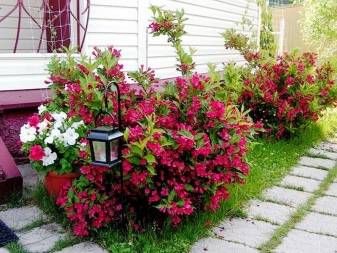
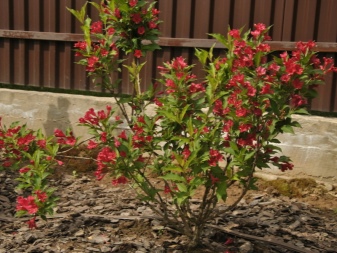

Reproduction methods
Weigela can be propagated by seeds, cuttings and layering.

Cuttings
It is possible to grow a shrub that has retained all its maternal qualities by cuttings. It can be done 2 times a season: before the buds open (in March) and in early June. In spring it is done like this.
- Woody twigs are cut off and divided into cuttings, their length is from 10 to 15 cm. Each stalk must have at least 2 buds.
- The leaves are removed from the bottom of the cutting, and the upper ones are cut off to half lengths.
- The cuttings are placed for a few minutes in a root growth stimulator (Kornevin, Epin).
- Then they are planted in a container with a substrate consisting of turf soil and sand, taken in equal quantities, deepening by about 0.5-1 cm, and then covered with a film.
- Caring for seedlings consists of regular watering, feeding and daily airing.
- Pinching is carried out on a seedling that has reached a height of 5 cm.

Over the summer, seedlings usually grow up to 25 cm. They need to be transplanted into a separate container and grown at home a year until next fall. During this time, a young bush grows up to 4 shoots. Such a seedling must be transplanted into open soil. In the summer, cuttings of green twigs are used. They are prepared for planting in the same way as for spring cuttings. However, the planting of green cuttings is done directly in the ground. They should be covered with a jar, which is removed every day for airing. Watering is carried out daily.

Layers
For layering, choose a healthy, strong lower branch and tilt it towards the soil. In those places where the shoot touches the ground, you need to make an incision in the bark. The branch is attached to the ground and covered with soil. In spring, the layering gives roots and shoots. They can be transplanted to a permanent place only at the age of 3.
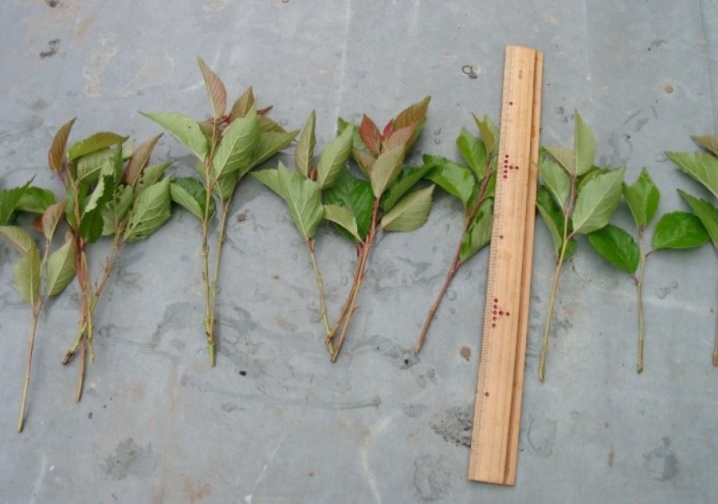
Seeds
With the seed method, the so-called self-seeding is usually used: seeds that have fallen into the ground in the spring can germinate. Of these, the strongest are chosen and the houses are grown for 2 years and only then are they planted in a permanent place.
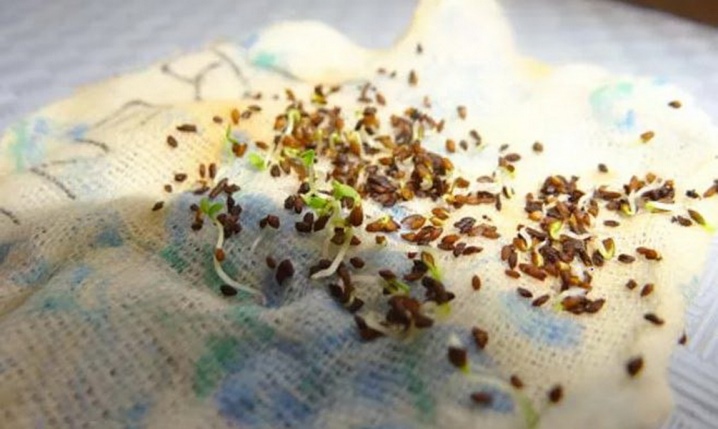
Diseases and pests
Weigela is usually affected by diseases such as rust, spotting, and gray mold. The bacterial and fungal infections that cause these diseases are well treated with Bordeaux liquid. In order to prevent diseases during the period of foliage blooming, spraying with a solution (3%) "Topsin" should be carried out. Leaf-eating pests (caterpillars) and aphids most often settle on weigel, and in the heat, thrips and spider mites may appear.
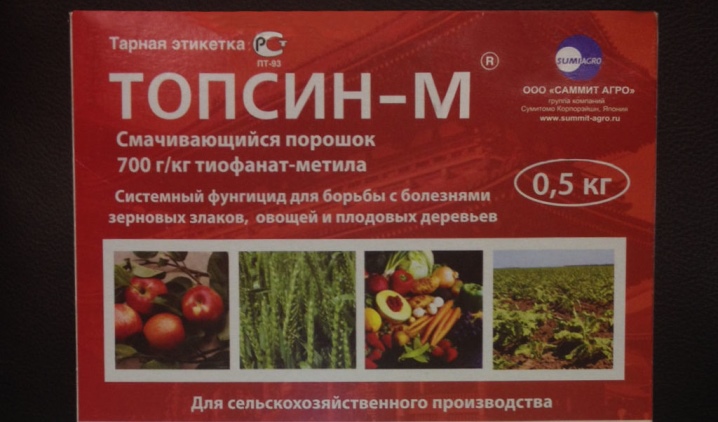
Insecticides "Nitrafen", "Rogor", "Keltan" help to fight them. There are also folk remedies: infusions - garlic, wormwood and from bitter capsicum. Often on the bushes, the leaves turn yellow and dry out. This happens when the roots are damaged by a bear or larvae of May beetles. To destroy them, the land under the bush is cultivated with Aktara and Karbofos.
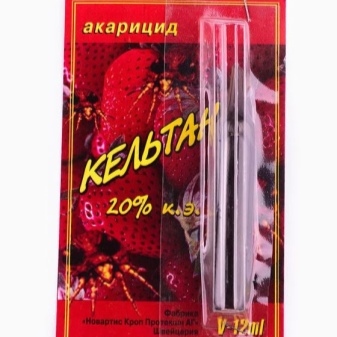
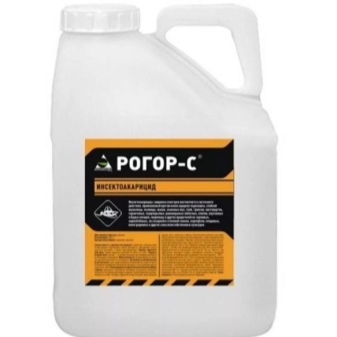
Use in landscape design
The decorative properties of weigela are widely used in landscape design. It goes well with other types of plants, complementing and shading their decorative effect. Usually it is used to create compositions with such plants: berry yew and juniper, lilac and rhododendron, hydrangea and barberry, cotoneaster and Japanese quince, ornamental cereals and various types of conifers.
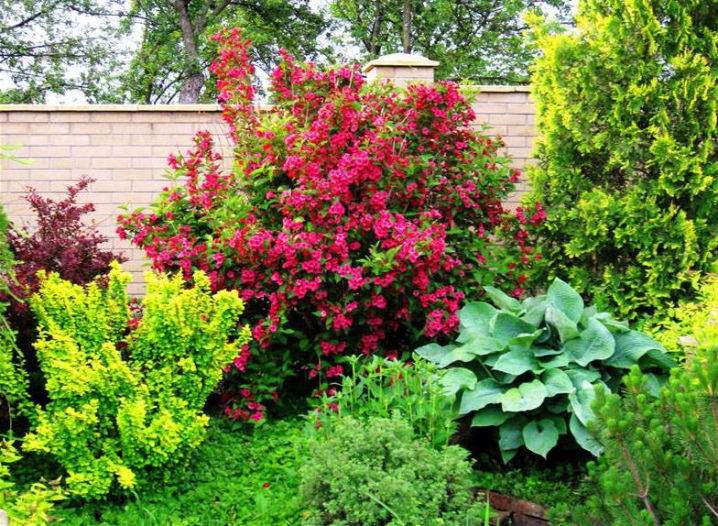
When using weigela in group plantings, the size and flowering time of all plants should be taken into account. Low-growing varieties of shrubs are widely used to decorate flower beds, alpine slides, mixborders. Tall weigels are used in group combined decorative ensembles, planted along paths to create alleys. Compositions from different varieties of this shrub have an unusually beautiful appearance. Tall weigels look great in solitary plantings or in the form of a hedge.
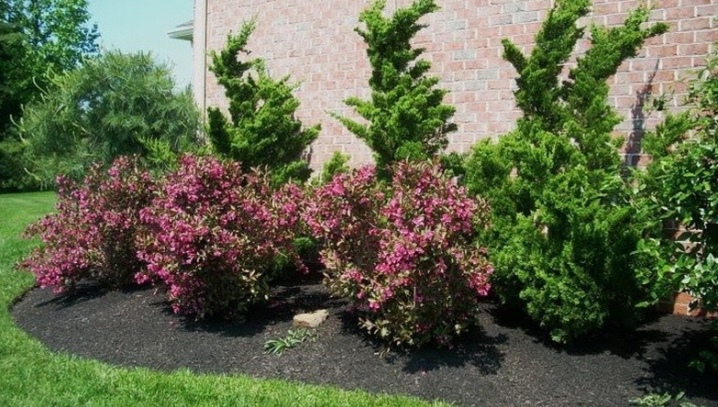
For information on how to properly care for the weigela blooming, see the next video.



































































The comment was sent successfully.